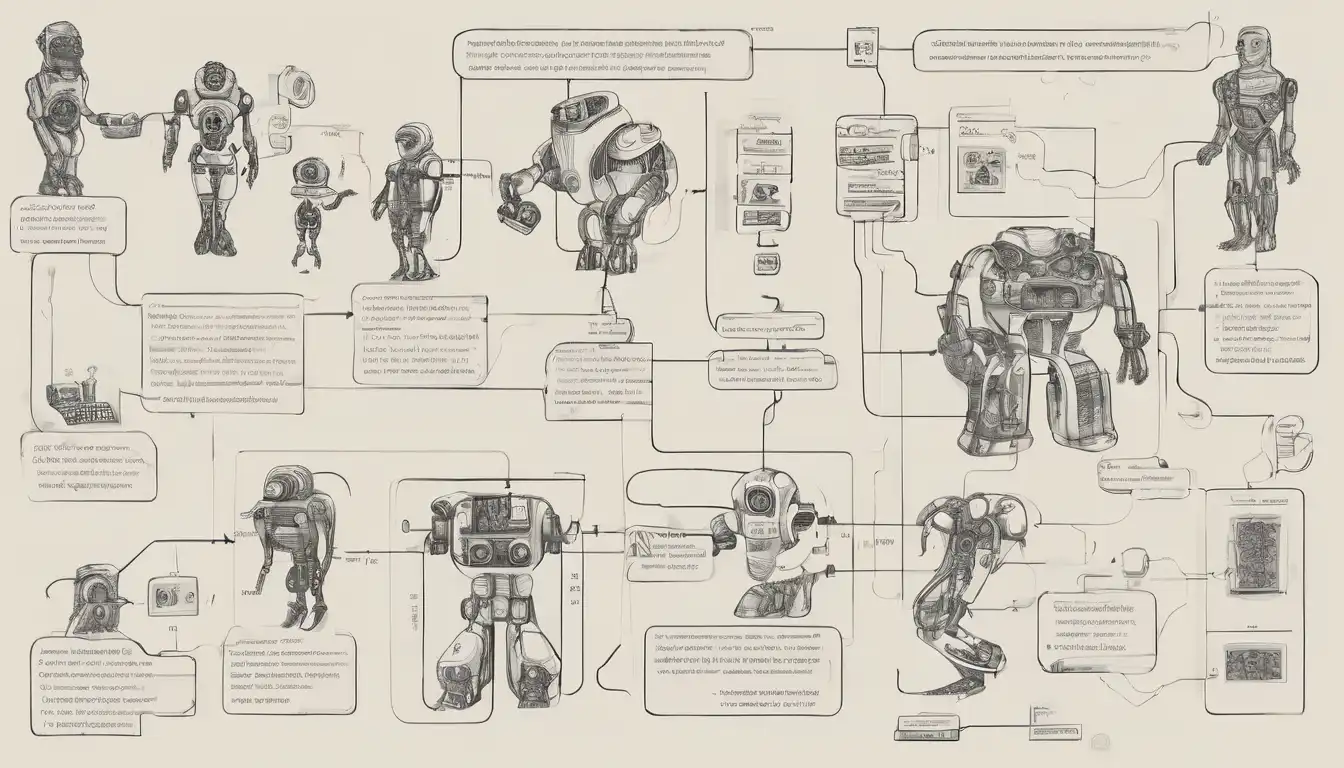Essential Machine Learning Algorithms Every Developer Must Master
In today's rapidly evolving technological landscape, machine learning has become an indispensable skill for developers across all domains. Whether you're building web applications, mobile apps, or enterprise software, understanding core ML algorithms can significantly enhance your problem-solving capabilities and open up new opportunities for innovation. This comprehensive guide covers the fundamental machine learning algorithms that every developer should have in their toolkit.
Why Machine Learning Matters for Developers
Machine learning is no longer confined to specialized data science teams. Modern developers encounter ML-powered features in everyday applications—from recommendation systems and fraud detection to natural language processing and computer vision. By understanding these algorithms, developers can better integrate ML capabilities, debug ML-powered systems, and contribute to AI-driven projects effectively.
Supervised Learning Algorithms
Linear Regression
Linear regression is the foundation of predictive modeling and one of the first algorithms developers should master. This algorithm models the relationship between a dependent variable and one or more independent variables using a linear approach. It's particularly useful for forecasting, trend analysis, and understanding variable relationships. Developers often use linear regression for sales forecasting, risk assessment, and performance prediction in various applications.
Logistic Regression
Despite its name, logistic regression is used for classification problems rather than regression. This algorithm estimates probabilities using a logistic function, making it ideal for binary classification tasks. Common applications include spam detection, customer churn prediction, and medical diagnosis systems. Its interpretability and efficiency make it a go-to choice for many real-world classification problems.
Decision Trees
Decision trees provide an intuitive, tree-like model of decisions and their possible consequences. Each internal node represents a feature test, each branch represents the outcome, and each leaf node represents a class label. Developers appreciate decision trees for their transparency and ease of interpretation. They're widely used in customer segmentation, credit scoring, and medical diagnosis systems.
Unsupervised Learning Algorithms
K-Means Clustering
K-means clustering is perhaps the most popular unsupervised learning algorithm. It partitions data into K distinct clusters based on feature similarity. This algorithm is invaluable for market segmentation, document classification, and image compression. Developers often use K-means for customer segmentation in e-commerce applications and anomaly detection in system monitoring.
Principal Component Analysis (PCA)
PCA is a dimensionality reduction technique that transforms high-dimensional data into a lower-dimensional space while preserving as much variance as possible. This algorithm is essential for data visualization, noise reduction, and improving model performance by eliminating redundant features. Developers use PCA in image processing, financial modeling, and when working with high-dimensional datasets.
Ensemble Methods
Random Forest
Random forest is an ensemble learning method that operates by constructing multiple decision trees during training and outputting the mode of classes (classification) or mean prediction (regression) of the individual trees. This algorithm typically delivers high accuracy and handles overfitting well. Developers leverage random forests for recommendation systems, stock market analysis, and medical diagnosis applications.
Gradient Boosting Machines (GBM)
Gradient boosting builds models sequentially, with each new model correcting errors made by previous ones. Algorithms like XGBoost, LightGBM, and CatBoost have become industry standards for winning machine learning competitions and solving real-world problems. These are particularly effective for structured data problems and are widely used in financial services, healthcare, and e-commerce applications.
Neural Networks and Deep Learning
Convolutional Neural Networks (CNNs)
CNNs have revolutionized computer vision and image processing. These networks use convolutional layers to automatically and adaptively learn spatial hierarchies of features. Developers use CNNs for image classification, object detection, and facial recognition systems. The architecture's ability to handle spatial relationships makes it ideal for visual data processing.
Recurrent Neural Networks (RNNs)
RNNs are designed to work with sequence data, making them perfect for time series analysis, natural language processing, and speech recognition. Unlike feedforward neural networks, RNNs have connections that form directed cycles, allowing them to maintain a 'memory' of previous inputs. Long Short-Term Memory (LSTM) networks, a variant of RNNs, are particularly effective for handling long-term dependencies.
Reinforcement Learning Algorithms
Q-Learning
Q-learning is a model-free reinforcement learning algorithm that learns the value of an action in a particular state. It doesn't require a model of the environment and can handle problems with stochastic transitions and rewards. Developers use Q-learning for game AI, robotics, and autonomous systems where an agent learns to make decisions through trial and error.
Choosing the Right Algorithm
Selecting the appropriate machine learning algorithm depends on several factors: the nature of your data, the problem type (classification, regression, clustering), dataset size, and computational constraints. For beginners, starting with linear regression and logistic regression provides a solid foundation before moving to more complex algorithms like neural networks and ensemble methods.
Implementation Considerations
When implementing these algorithms, developers should consider factors like data preprocessing, feature engineering, model evaluation, and deployment strategies. Proper validation techniques, such as cross-validation, are crucial for ensuring model reliability. Additionally, understanding the trade-offs between model complexity and interpretability is essential for practical applications.
Learning Resources and Next Steps
To deepen your understanding of these algorithms, consider working on practical projects, participating in Kaggle competitions, and exploring frameworks like Scikit-learn, TensorFlow, and PyTorch. Continuous learning and hands-on practice are key to mastering machine learning as a developer. Remember that the field is constantly evolving, so staying updated with the latest developments is crucial for long-term success.
By mastering these essential machine learning algorithms, developers can build more intelligent applications, solve complex problems more effectively, and position themselves at the forefront of technological innovation. Whether you're working on web development, mobile apps, or enterprise systems, these algorithms provide the foundation for creating smarter, more adaptive software solutions.
